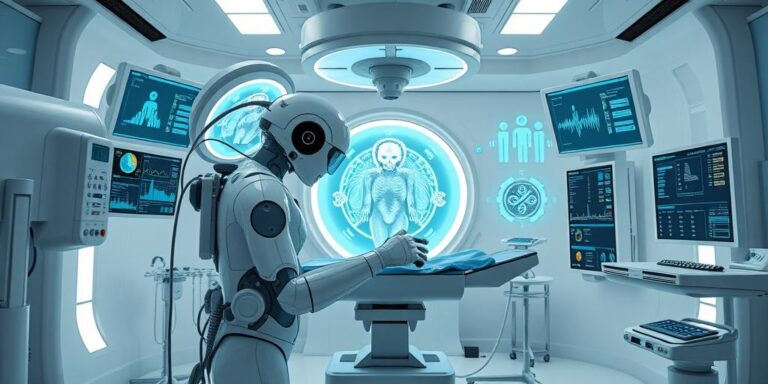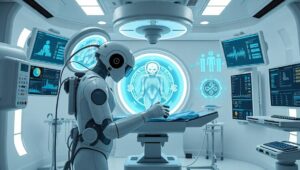The Future of Robotic Surgery Assisted by IoT (2027)
In 2027, the landscape of surgery is undergoing a dramatic transformation, driven by the convergence of robotics and the Internet of Things (IoT). Robotic surgery, once a nascent field, is now becoming increasingly sophisticated and integrated, promising enhanced precision, minimally invasive procedures, and improved patient outcomes.
What is Robotic Surgery?
Robotic surgery involves the use of robotic systems to assist surgeons in performing complex procedures. These systems typically consist of robotic arms equipped with surgical instruments, a high-definition 3D visualization system, and a console where the surgeon controls the instruments. The surgeon’s hand movements are translated into precise movements of the robotic arms, allowing for greater dexterity and control than traditional surgery.
The Role of IoT in Robotic Surgery
The Internet of Things (IoT) is playing a crucial role in advancing robotic surgery by connecting various devices, sensors, and data sources. This connectivity enables real-time data collection, analysis, and feedback, enhancing the capabilities of robotic systems and improving surgical outcomes.
Here are some key applications of IoT in robotic surgery:
- Real-time Monitoring: IoT sensors embedded in surgical instruments and patient monitoring devices provide real-time data on vital signs, tissue perfusion, and instrument positioning. This data is transmitted to the surgeon’s console, allowing for immediate adjustments and interventions.
- Remote Collaboration: IoT enables remote collaboration between surgeons, allowing experts from different locations to participate in complex procedures. This is particularly valuable in rural or underserved areas where access to specialized surgical expertise may be limited.
- Data Analytics and Machine Learning: The vast amounts of data generated during robotic surgeries can be analyzed using machine learning algorithms to identify patterns, predict potential complications, and optimize surgical techniques. This data-driven approach can lead to continuous improvements in surgical outcomes.
- Enhanced Training and Simulation: IoT-enabled simulation platforms provide realistic training environments for surgeons to hone their skills and practice complex procedures. These platforms can simulate various surgical scenarios, allowing surgeons to develop their expertise without risking patient safety.
Benefits of IoT-Assisted Robotic Surgery
The integration of IoT into robotic surgery offers several significant benefits:
- Improved Precision and Accuracy: Robotic systems, combined with real-time data from IoT sensors, enable surgeons to perform procedures with greater precision and accuracy, minimizing the risk of errors and complications.
- Minimally Invasive Procedures: Robotic surgery allows for smaller incisions, resulting in less pain, reduced blood loss, and faster recovery times for patients.
- Enhanced Visualization: High-definition 3D visualization systems provide surgeons with a clear and detailed view of the surgical site, improving their ability to navigate complex anatomy.
- Reduced Surgeon Fatigue: Robotic systems can reduce surgeon fatigue by providing ergonomic support and minimizing the physical demands of surgery.
- Remote Access to Expertise: IoT-enabled remote collaboration allows surgeons in underserved areas to access the expertise of specialists from around the world, improving patient care.
Challenges and Future Directions
Despite its numerous benefits, the widespread adoption of IoT-assisted robotic surgery faces several challenges:
- Data Security and Privacy: The collection and transmission of sensitive patient data raise concerns about data security and privacy. Robust security measures are needed to protect patient information from unauthorized access.
- Interoperability: Ensuring interoperability between different robotic systems, IoT devices, and data platforms is crucial for seamless integration and data exchange.
- Cost: Robotic surgery systems and IoT infrastructure can be expensive, limiting their accessibility in some healthcare settings. Efforts are needed to reduce costs and make these technologies more widely available.
Looking ahead, the future of robotic surgery assisted by IoT is promising. As technology continues to advance, we can expect to see even more sophisticated robotic systems, advanced sensors, and innovative applications of data analytics and machine learning. These advancements will further enhance the precision, safety, and effectiveness of surgical procedures, ultimately leading to improved patient outcomes and a transformation of healthcare delivery.




